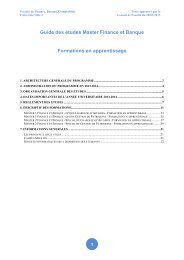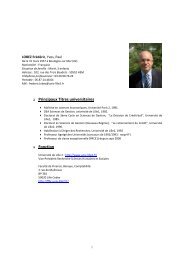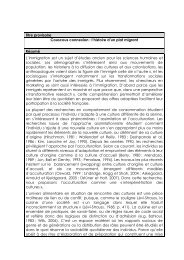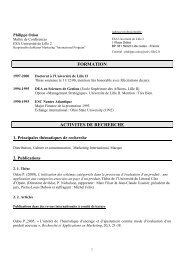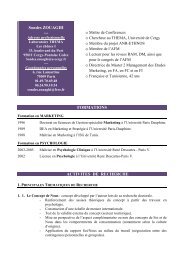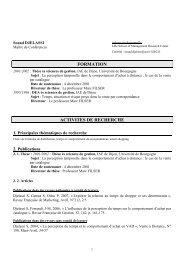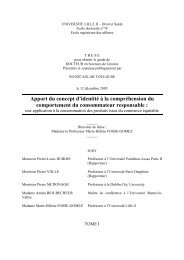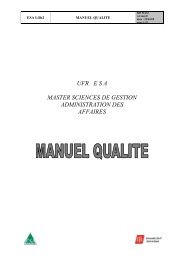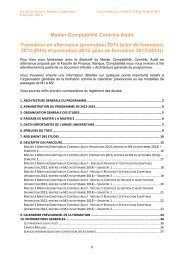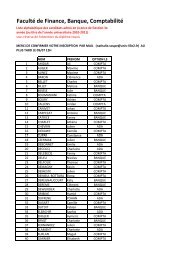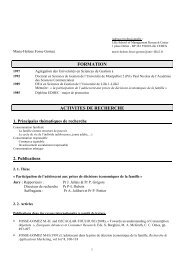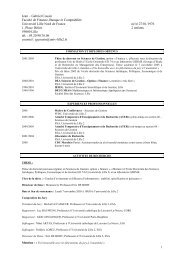Event Study
Event Study
Event Study
You also want an ePaper? Increase the reach of your titles
YUMPU automatically turns print PDFs into web optimized ePapers that Google loves.
where Ri,t and Rm,t are the returns of firm i and of a market-portfolio proxy at time t, respectively. We<br />
identify the event dates using a dummy variable, denoted Di,t, which takes the value 1 for days in the<br />
event window and 0 otherwise. The coefficient of interest, γi, is an estimate of the firm i’s average<br />
abnormal return over the event window (AARi,E).<br />
Under the classical assumptions of identically and independently distributed disturbances εi,t, the standard<br />
regression results provide us with the standard errors of AARi,E:<br />
−1<br />
2<br />
( [ X ' X ] ) σ ( ε )<br />
2<br />
σ ( γ ) = , (2)<br />
i<br />
2,<br />
2<br />
i<br />
where [X'X] −1 corresponds to the inverse of the variance-covariance matrix of the independent variables<br />
and (.)2,2 is the element of the matrix between parentheses located at Row 2 and Column 2. σ 2 (εi) is a<br />
measure of the firm i’s idiosyncratic risk 4 . The effect of an increase in idiosyncratic risk on the variance of<br />
AARi,E is therefore given by:<br />
2<br />
σ ( γ i )<br />
= 2<br />
∂σ<br />
( ε )<br />
1 ( [ X ' X ] ) > 0<br />
∂ −<br />
i<br />
2,<br />
2<br />
. (3)<br />
Equation (3) is strictly positive (it is a variance), which shows that an increase in the idiosyncratic<br />
variance increases the variance of AARi,E. Consequently, this reduces the significance of the coefficient γi.<br />
Therefore, Equation (3) clearly indicates a loss of power due to an increase in a firm’s idiosyncratic risk ,<br />
in a case-study analysis.<br />
For a sample study, we need to compute a statistical test of significance for the cross-sectional average<br />
cumulative abnormal return (ACAR). A convenient candidate is the classical Brown and Warner (1980)<br />
test of significance. Using N to denote the sample size and TE for the length of the event window, the<br />
statistical test of significance for ACAR is given by the Student t-statistic<br />
4 Note that this measure is different from that used by Campbell et al. (2001). These authors introduced a model-free<br />
measure of idiosyncratic risk into their study to avoid the risk of their results being dependent on a specific model.<br />
6



